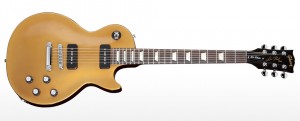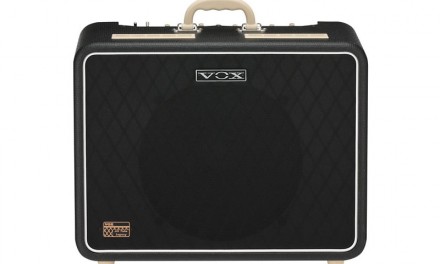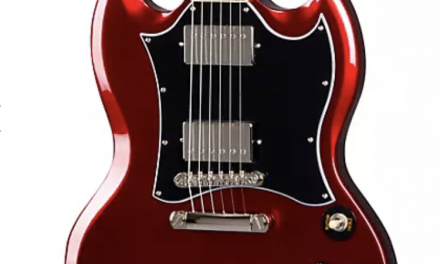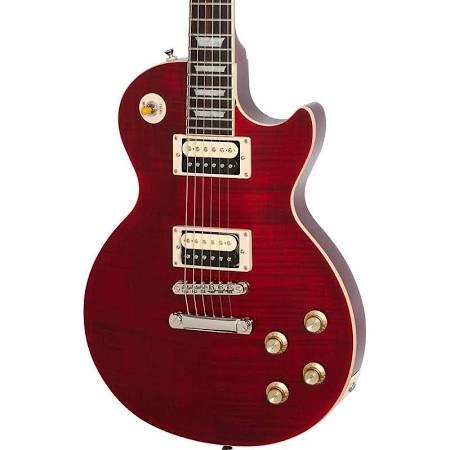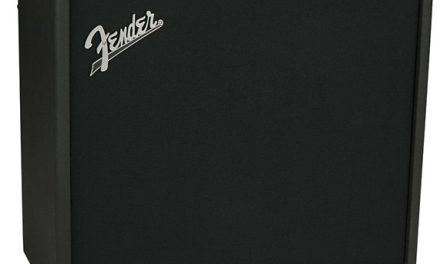Yesterday I came home with a used Gibson Les Paul. From Guitar Center. For less than $500.
It’s rare to get a really, really good deal at a Sam Ash or a Guitar Center, but it is possible. I visit the semi-local music stores almost every weekend, and the biggest reason is the used gear. Most things I see are a little overpriced, but not terrible. But I saw this guitar, picked it up, and it didn’t leave my sight until I gave the man $125 to put it on layaway. Why layaway?
Because it was used, so it had to remain unsold for 30 days. GC will put such items out in stock, but put a note on the tag. I had to wait 4 weeks to pick it up. After two weeks I went in and put more money down on it. And then after three weeks, aka yesterday, I went to pay it off, knowing I’d have to wait another week to take it home. But my sales guy (Al – he’s my new sales guy at that particular GC) said “Wait… hang out for a minute.” And he was able to let me take it home yesterday, a week early.
Nothing underhanded – the guitar had originally been sold, to the original owner, at that same GC. So they had all the records. Al called what I would call “the District Office” and talked to some people, and then I was able to walk out with the thing.
You know from the title what it is, so here’s the rest. This guitar had one owner, who played it for a day and brought it back and got a Telecaster instead. The back of the guitar has some scratches but nothing horrific – I’d say it came from people playing it in the store when it was new. The front of the guitar is mint. I have no idea what it sold for the first time around – they usually went for $999 to $1,200, but they’ve been marked down to as low as $749.
Headstock
This has Grover tuners, non-locking. Will I replace them with locking Grovers? Of course I will, but it’s not a priority.
It has a nitro finish, which has an interesting but pleasant aroma. It still has “new guitar smell.” It also still has the factory strings. I haven’t changed them yet – I’m trying to decide if I should go with 9’s or 10’s. The neck is fantastic. The top edge is rolled, the neck is thin at the first fret and gets slightly thicker. The frets are medium jumbo and the action is fairly low for a Les Paul. It’s very comfortable to play.
Neck
This guitar has what Gibson calls a 50’s profile shape. It’s not a wide flat neck like my PRS SE – it’s pretty skinny by the first fret, but gets slightly thicker higher up on the neck. It’s extremely comfortable, and nitro is far better than gloss on the back of the neck IMHO. The frets are medium jumbo and the nut is black Corian.
The action and intonation were both set up great – I don’t feel like I need to adjust either, which is rare. The neck is mahogany, the fingerboard is rosewood, and on a bend I can feel my finger slightly rubbing against it. I’ve always liked maple fingerboards better for that reason. But a maple fingerboard on this guitar would look wrong to me.
The Gibson Plek system is used on all Gibson guitars, and it’s basically a computerized setup process that does the fretwork to a super high level. And the fretwork on this guitar is superb, as you’d expect from this system. However, on some of the higher frets, you can feel a little too much of the edge of the fret on the bottom of the neck. This is due to temperature changes – the guitar is made out of wood, after all. I had a similar experience with my PRS SE. In both cases the issue is so minimal that I forget about it. But I have a feeling I’m going to be purchasing an appropriate fret file and working on the higher frets on both guitars.
Body
The body is mahogany, the cap is maple, and Gibson drilled weight-relief holes into the body before putting the cap on, which is what you do in order to keep the guitar from weighing a ton. This guitar is not light – it has some weight to it – but it’s not what I’d consider heavy.
The front has a deep gold paint job, the back is a natural dark stain, and the whole body was finished in nitrocellulose lacquer. I have to be honest – I’ve always been a poly guy. To me, the nitro guitars always looked like someone was cutting corners. But in this case, it’s the right move. It’s certainly more authentic – Gibson wasn’t doing poly finishes in the 50’s. Of course, they also weren’t using Grover tuners or computers that used precision lasers to measure frets. I wasn’t kidding about the smell – it does have a deep, rich, sweet smell. That will fade over time.
Pickups
The P-90 pickups that came with this thing use Alnico V bar magnets and they are HOT. The tone is definitely there – it’s very aggressive and raw. With the single coil P-90’s come the noise, but for recording situations I don’t think that will be a huge issue. As long as I don’t go for an overdrive sound. But that’s what the PRS is for.
This guitar nails the aggressive 70’s rock sound, but it also handles country twang and full-bodied jazz sounds with ease. Played clean with both pickups on, it has a deep, strat-like tone that is very pleasant. But the true strength of this guitar is that raw aggressive sound. Search YouTube for “Phil X Gibson Les Paul P 90” and you’ll hear exactly what I’m talking about.
Would I ever swap out these pickups? Child, please. I’m more likely to swap out the pickups in my Epiphone Les Paul, which currently has Alnico II pickups from GFS. I’m thinking about putting a Gibson 498T in the bridge – Gibson puts it into most of its guitars including the Les Paul Studio line, and I like it a LOT. Ultimately I won’t do that – I’d rather put the $100 aside towards a Gibson Les Paul Studio (see summary.)
Playability
The guitar plays like a dream. Picking up my Epiphone after playing this guitar was like going to the toy section. Not really – there’s nothing wrong with the Epiphone. But you can definitely feel the difference – the Gibson is much more comfortable. The things that have always annoyed me about the Les Paul are still true – the guitar needs a “tummy cut” and doesn’t have one, so it’s digging into your ribs a bit as you play. And access to the frets above 15 is poor. You know these things coming in, though, with a Les Paul.
Summary
I’m thrilled with this purchase. I always wanted a Gibson Les Paul but finding one used in good enough condition to play, for a reasonable price… that’s been impossible. But Gibson’s 2013 line had some good thousand dollar guitars in it, and as they start to show up on the used market there’ll be some good deals out there. In a few years I’m hoping to find a used black 2014 Les Paul Studio for around $500. And if that happens, the Epiphone is gone. But this guitar is an awesome addition to my collection and I’m super happy with it.


